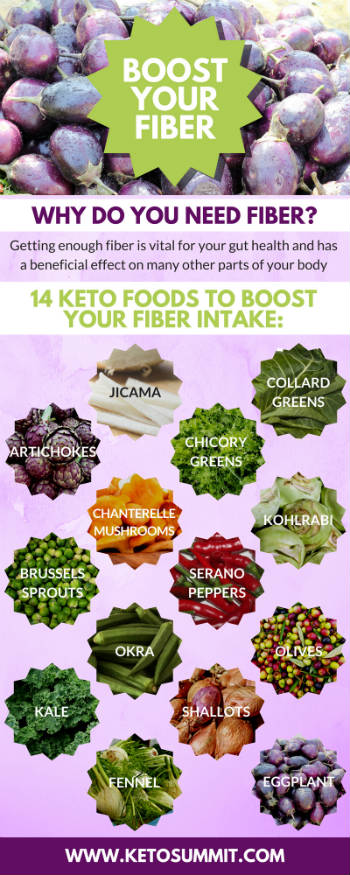14 Keto Foods That Will Boost Your Fiber
Making sure you get enough fiber in your diet is vital for your overall health. And it can also help you succeed with your Keto diet.
But where can you get your fiber? And how do you eat enough fiber without overdoing the carbs?
This article will give you 14 Keto-friendly foods which are full of fiber and low in carbohydrates. And we’ll also give you an alternative solution if those aren’t enough!
(Note: The recommended fiber intake for women is 25g per day, and it’s even higher for men at 30 – 38g per day.)
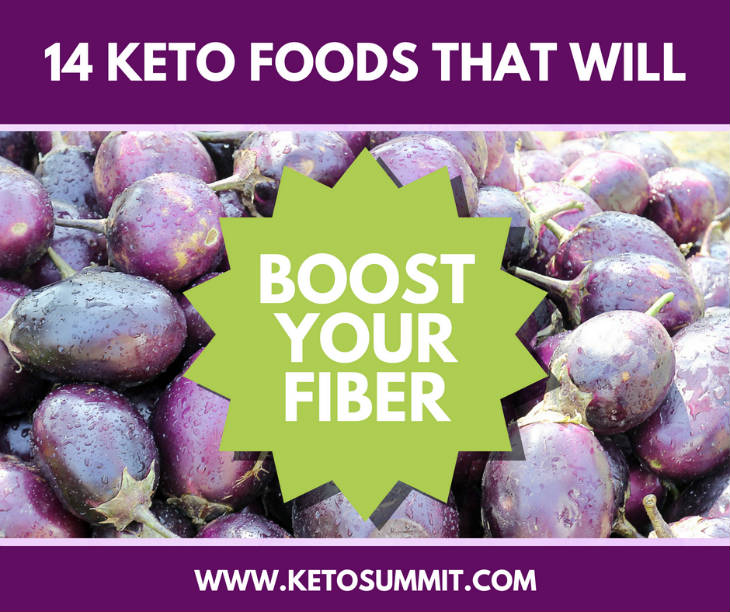
Fiber and Prebiotic Fiber are essential on Keto
Fiber is made up of all the parts of plants foods which your body can’t digest. You’ll also see it called roughage or bulk.
Unlike the fats, proteins, and carbohydrates in your food, your body doesn’t absorb any of the fiber you eat. But just because you can’t digest fiber, that doesn’t mean it’s not important…
Having plenty of fiber in your diet is essential for a healthy gut:
- It helps keep your bowel movements regular and decreases your chances of constipation (which is sometimes a problem for folks when they first start a Keto diet).
- It feeds the good bacteria which live in your gut and increases their numbers, which has a beneficial effect on everything from your hormones to preventing colon cancer. (1, 2)
- It can help protect you against gastrointestinal diseases, like hemorrhoids and ulcers. (3)
Eating lots of fiber also benefits your health in other ways:
- It can lower your cholesterol levels, triglyceride levels and blood pressure (4)
- It can reduce your risk of developing metabolic syndrome (5)
- It can help improve your blood sugar levels, especially if you’re diabetic (6)
- It helps you lose weight (7)

But won’t eating more fiber increase your carb intake? Not necessarily…
Does Fiber count towards your Keto carb intake?
The short answer is no.
And the reason why that’s the case is down to the difference between net carbs and total carbs…
Net Carbs vs Total Carbs: What’s the difference?
“Total Carbohydrates” are usually the number you’ll find listed on the back of a food label.
It includes both the impact carbs and non-impact carbs which a food contains:
- Impact carbs have a high glycemic index and strong effect on your blood sugar.
- Non-impact carbs, like fiber and sugar alcohol, have a very small effect on your blood sugar
“Net Carbohydrates” are calculated by subtracting the amount of fiber and sugar alcohol from the total carbohydrates which a food contains.
Sugar alcohols are fairly rare so, in most cases, the formula to remember is this:
- Net Carbs = Total Carbs – Fiber
Generally speaking, you should count Net Carbs on Keto, and that means the fiber you eat won’t count towards your daily carb intake. You can learn more details in this article on Net Carbs vs Total Carbs.
14 Keto Foods To Boost Your Fiber Intake
If you’re looking to boost your fiber intake, try making sure you eat at least one of the foods from this list each day…
1. Artichokes (Globe or French)
One large artichoke (56g edible portion) contains 5g of fiber and 1g of net carbs. (8)
They may look intimidating at first, but artichokes are a delicious way to get your fiber. You just need to know how to prepare them!
An easy way to prepare artichokes is to roast them:
- Wash the artichokes and cut them in half
- Remove the hairy center and the smallest leaves
- Place them on a baking sheet, drizzle with oil and roast in the oven until tender
- Top with butter before serving
You can find the full recipe here.
To eat them, you’ll need to peel away the outer leaves and scrape the tender part off them with your teeth. Until you get to the tender “heart”, which you can eat whole!
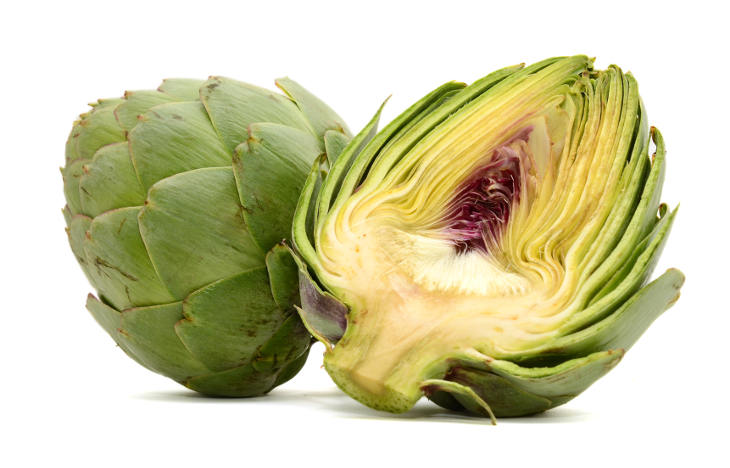
2. Jicama (Yam bean)
A cup of raw jicama slices contains 5.9g of fiber and 4.7g of net carbs. (9)
You can find jicama for sale in most large grocery stores. It’s a type of root (not a bean!) which is high in vitamin C and inulin (a type of prebiotic fiber).
Use jicama as a substitute for potatoes:
- To make fries, peel the root and cut it into thin rectangles. You can cut it into chunks if you’re looking to make “roast potatoes” rather than fries.
- Add salt and seasonings, then bake them in the oven on a well-greased tray
- Once the pieces are browned on one side, turn them over and leave until the other side is browned too
Take a look at the full recipe here.
You’ll find the texture is a little more crunchy and the flavor is slightly sweeter than traditional potato-based fries, but they’ll still hit the spot!
3. Chicory Greens
Chicory greens contain 4.0g of fiber and less than 1g of net carbs per 100g. (10)
Although these greens have a reputation for tasting bitter, don’t be put off! The key is to prepare them correctly.
To prepare your chicory greens for maximum flavor:
- First, wash the green leaves
- Then, heat some bacon fat in a pan and add the leaves once the fat is hot
- When the leaves are wilted, remove them from the pan and sprinkle with salt, vinegar, and pepper.
You’ll see the full recipe here
You can even mix the wilted greens with cubes of fried pancetta if you like! Or, you can skip the cooking completely and use the raw leaves to make a simple side salad.
4. Collard Greens
100g of collard greens contains 4.0g of fiber and only 1.4g of net carbs. (11)
They might feel tough when you buy them, but cooking makes these greens much more tender and really removes their bitterness. They pair very well with crispy chicken thighs or roasted pork.
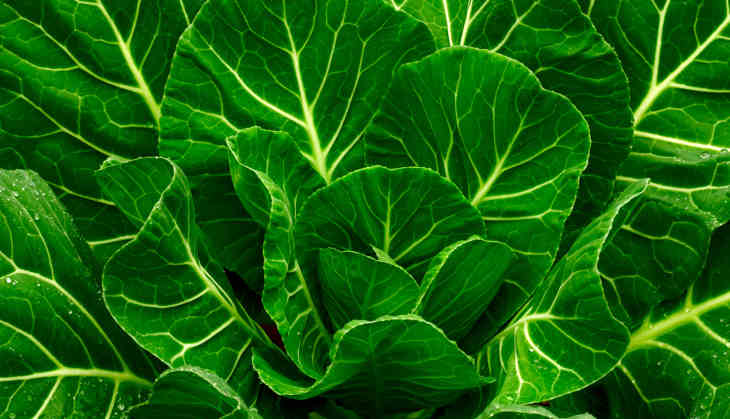
A simple way to prepare your greens:
- Chop or tear your collard greens into pieces, removing the stems
- Melt bacon fat and olive oil in a skillet, then add onion and saute until the onion becomes transparent
- Add the greens, with some sesame oil, chili flakes, salt and sugar for flavoring
- Cover the skillet and cook for 10-15 minutes until the greens are tender
Have a look at the full recipe here.
Collard greens are also a great source of B-vitamins, iron and omega-3 fatty acids. So they definitely deserve a place on your plate!
5. Brussels sprouts
Cooked brussels sprouts contain 2g of fiber and 3.5g of net carbs per cup. (12)
They aren’t just a good source of fiber; they’re also packed with inflammation-fighting vitamin K, immune-boosting vitamin C, and heart-healthy folate.
My favorite brussel sprout recipe combines them with bacon:
- Boil your brussel sprouts until they’re tender, then drain them.
- Fry up some chunks of bacon, until they’re nice and crispy.
- Combine the brussel sprouts with the bacon, and fry them for a little longer.
Check out the full recipe here.
You can enjoy this dish on its own, or eat a smaller portion as a side dish or starter.
6. Chanterelle Mushrooms
Chanterelle Mushrooms contain 2.1g of fiber and 1.6g of net carbs per cup. (13)
These mushrooms are orange/yellow or white, and much more filling than other types – thanks to their dense and almost meaty texture.
You can turn your mushrooms into a delicious side dish in less than 15 minutes:
- Clean the chanterelle mushrooms, and chop into halves or quarters
- Mix with melted butter, thyme leaves, salt, and pepper
- Roast for 10-15 minutes
You’ll find the full recipe with photos here.
This is the perfect side dish for a steak dinner – it adds a healthy dose of fiber to an otherwise protein-heavy meal.
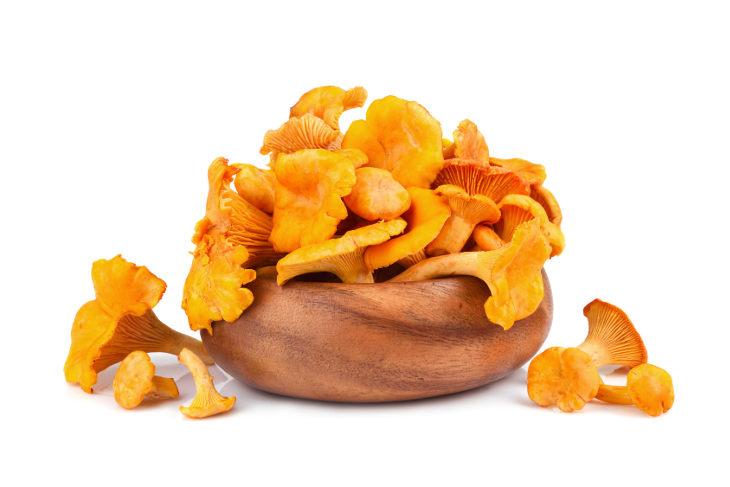
7. Serrano Peppers
Chopped serrano peppers contain 1.9g of fiber and 1.5g of net carbs per ½ cup. (14)
These peppers are a type of chili, with a vibrant and spicy flavor. Add them to your keto-friendly curries for some extra heat.
A few precautions when you’re cooking with serrano peppers:
- Wash your hands and cutting boards thoroughly when you’re done
- Take out their seeds if you want to reduce their spiciness
- Don’t touch your eyes until you’ve washed your hands!
Here’s a great recipe for Indian eggplant curry with serrano peppers.
The heat in serrano peppers comes from capsaicin – and that’s also what makes these peppers so healthy. Capsaicin also lowers your cholesterol levels and improves your heart health (15).
8. Kohlrabi
Kohlrabi contains 4.9g of fiber and 3.5g of net carbs per cup. (16)
This root vegetable has a turnip-like taste, although it’s a little sweeter and milder. You’ll usually find either white or purple kohlrabi in supermarkets.
Turn your kohlrabi into a warming winter soup:
- Saute kohlrabi and garlic in a pan
- Boli and reduce vegetable stock
- Add the kohlrabi and garlic to the stock, along with some herbs and spices for flavor
- Once the kohlrabi is soft, blend the liquid to make a thick soup
The full recipe is here.
Or, in the summer months, you can eat your kohlrabi raw. Try grating it over your salads or nibbling on refreshing slices of kohlrabi with lemon juice.
9. Kale
Raw kale contains 4.1g of fiber and only 0.3g of net carbs per 100g. (17)
Kale might just be the most well-known superfood on this list! But dark leafy kale isn’t just packed with antioxidants – it’s also full of fiber.
Try this creamy coconut kale recipe:
- Saute onions in coconut oil
- Add coconut cream, kale, curry powder and salt
- Leave to simmer until the kale is soft
You can find the full recipe and nutritional breakdown here.
Kale also makes a great base for a salad or health-boosting green smoothie.

10. Okra
Okra contains 3.2g of fiber and 4.3g of net carbs per cup. (18)
It has an earthy taste (similar to green bell peppers), which becomes milder and closer to eggplant in flavor as you cook it.
Okra combines well with other veggies:
- Mix sliced okra, tomatoes, onion, zucchini and mushrooms in a bowl
- Stir in herbs, balsamic vinegar and olive oil
- Cook in a slow cooker for approx. 3 hours
Here’s the more detailed recipe for Slow Cooker Summer Veggies (with Okra).
Note: When you slice raw okra, you’ll see a liquid ooze out – don’t be alarmed! That’s what gives cooked okra its silky texture.
11. Shallots
A ¼ cup of shallots has 1.3 grams of fiber and 5.4g of net carbs. (19)
Thanks to their mild and slightly sweet flavor, shallots are a favorite ingredient for many folks. Think of them as similar to onions, but without the “bite”.
Add shallots to salads, meat dishes, and soups:
If you find you love the taste of shallots, you can use them as a substitute when a recipe calls for onions. As a guideline, 1 small onion is roughly equal to 3 small shallots.
Because shallots are a bit higher in net carbs, you can balance the carb load with greens or other low net-carb veggies.
12. Olives
10 large canned olives contain 0.7g of fiber and 2g of net carbs. (20)
The soft texture, salty flavor and high-fat content of olives makes them a great addition to anyone’s a Keto diet.
They not only taste great, they’ve got health benefits. Registered Dietitian Jaclyn London, RD, CDN says, “The polyphenols found in olives can help reduce chronic inflammation by stopping organ tissue damage before it starts.”
Olives can be found in all sorts of delicious Keto dishes:
A word of warning: Once you start it’s easy to keep eating olives, and the net carb content really starts to add up! So don’t eat them on their own as a snack – you can find better suggestions for No-Carb Snack Ideas here.

13. Fennel (bulb)
Fennel is a bulb that contains 2.7g of fiber and 3.7g of net carbs per cup. (21)
Raw fennel is firm and crunchy, adding a fresh and bright edge to any salad. But when fennel bulbs are grilled or braised, they become juicy and tender.
You can use fennel as just one part of the main dish, or let it take center stage:
- Spaghetti Squash With Cilantro-Macadamia Pesto
- Fennel & Kale Salad with Lemon Thyme Dressing
- 5 Spice Slow Cooker Pork Ribs
However you choose to enjoy your fennel bulbs, you’ll find their deliciously distinct licorice-like flavor is hard to mistake!
14. Eggplant
A cup of cubed eggplant contains 2.5g of fiber and 2.3g of net carbs. (22)
This vegetable has a slightly smoky taste and makes a filling addition to any dish. Its spongy texture will soak up the flavor of whatever you choose to cook it with.
Enjoy your eggplant as a dip, main dish or even a dessert:
- Cranberry Eggplant Bread Pudding
- Paleo Lasagna with Eggplants
- Grilled Eggplant And Roasted Red Pepper Dip
If you’re using old or large eggplants, you may want to peel their skin off before cooking with them. Although their skin is edible, it can have a slightly bitter flavor.
Optional: Supplement With A Comprehensive Prebiotic Fiber Blend
If you’re struggling to eat enough fiber on Keto, then supplementing with a good fiber blend can be a smart move.
Your best option is supplementing with prebiotic fiber…
Fiber vs Prebiotic Fiber
Fiber is the indigestible part of plants. It’s made up of substances like cellulose, lignin, and pectin which your body can’t break down and absorb.
Prebiotic fiber is a special type of fiber – even though your body doesn’t digest it, it is digested by the microorganisms in your gut. Which means it’s essentially food for your gut bacteria!
Dr. Michael Roizen, M.D. notes the importance of prebiotic fiber. “Dietary fiber such as prebiotic fiber can promote digestive health. 70% of your immunity is in your gut and as a result a healthy gut or digestive system can contribute to a healthy immune system.”
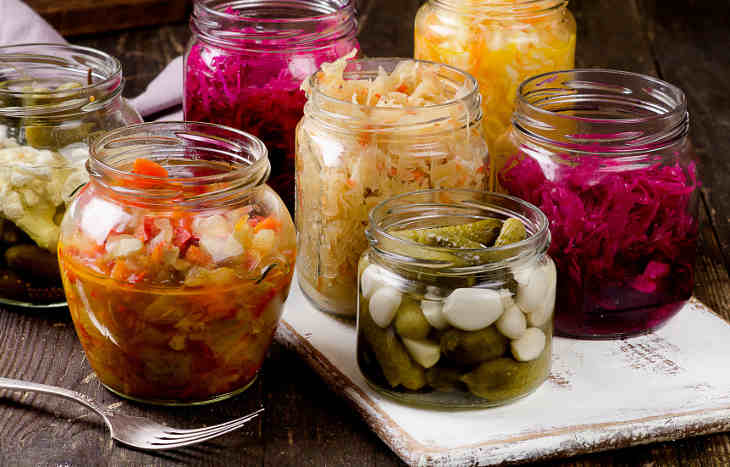
Researchers have found there are a number of benefits to supplementing with prebiotic fiber:
- It can improve the functioning of your immune system (23)
- It can prevent and reduce allergy symptoms (24)
- It may help your body absorb more calcium, which is great for your bones (25)
- It may reduce your risk of cardiovascular disease (26)
- It promotes weight loss and may prevent obesity (27)
And by feeding the friendly bacteria in your gut, you also guard yourself against overgrowth of bad bacteria, called dysbiosis. Dysbiosis has been linked to health problems like inflammatory bowel disease, allergies, asthma, cardiovascular disease, and obesity. (28)
Having plenty of good bacteria in your gut really is the key to good health. So make sure you feed your gut with prebiotic fiber!
Which Prebiotic Fiber supplement to take?
Look for a comprehensive supplement, with plenty of prebiotic fiber and no “junk” ingredients like preservatives, flavorings and soy. The brand we recommend is CoBionic Foundation.
Add These High Fiber Low Carb Foods to Your Keto Shopping List!
Boosting your fiber intake with these low carb vegetables is great for your health.
They don’t just contain lots of good-for-your-gut fiber. They’re also packed with all sorts of beneficial nutrients.
And because they’re low in carbohydrates, you don’t have to worry about being knocked out of ketosis. So make an effort to eat plenty of them!
If you can’t get enough fiber on Keto, try taking a good supplement like CoBionic Foundation. It will boost your prebiotic fiber intake, which will feed your good gut bacteria and improve your overall health.
Whether you get your fiber from food or from a supplement be sure you’re drinking lots of water. Dr. Stephen Sinatra, M.D. says, “As fiber passes through your GI tract, it will either dissolve in water (soluble fiber) or bind with it (insoluble fiber). Either way, your body needs more water, so make sure you add an extra glass or two.”
Pinterest Image For 14 Keto Foods That Will Boost Your Fiber
Please pin the image below so that you and others can quickly and easily refer to the list and start getting more healthy fiber in their diets today!
